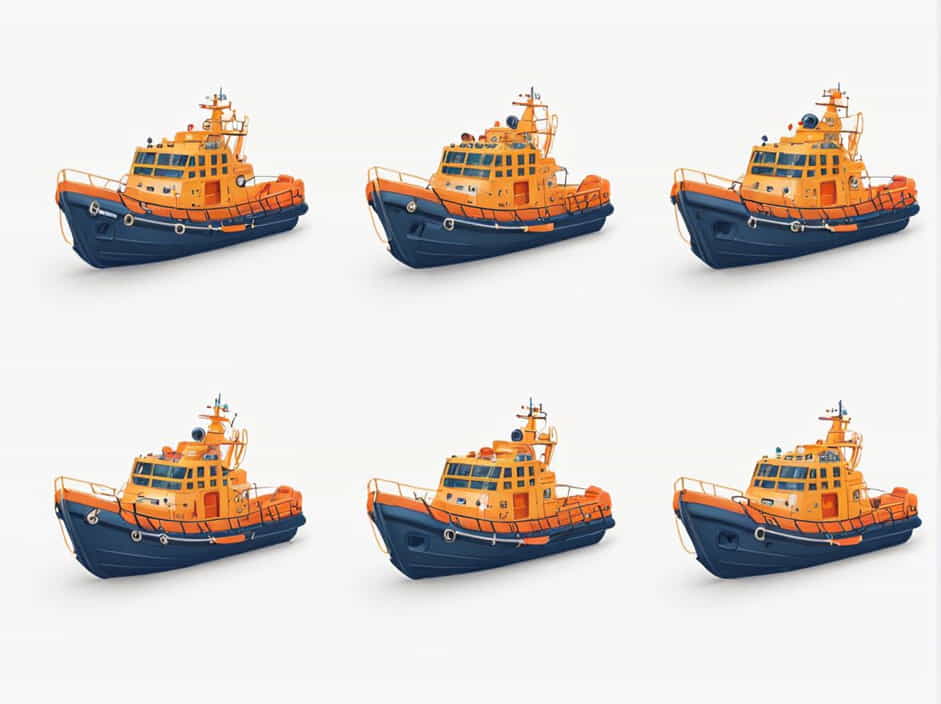Lifeboats are a critical component of maritime safety, designed to help passengers and crew survive in emergency situations. Whether on a cruise ship, cargo vessel, or offshore platform, lifeboats must be fully equipped with essential survival gear to ensure the safety and well-being of those on board.
Most lifeboats are equipped with a range of survival tools, communication devices, and emergency supplies to help people endure harsh conditions at sea until rescue arrives. Understanding what lifeboats contain and how they function can make a difference in an emergency.
1. Lifesaving Equipment on Board
Life Jackets and Personal Flotation Devices (PFDs)
Every lifeboat is stocked with life jackets and flotation devices for all passengers. These are designed to:
-
Keep individuals afloat in the water.
-
Provide warmth by reducing heat loss.
-
Increase visibility with reflective strips and bright colors.
Some lifeboats also include thermal protective aids (TPAs), which help prevent hypothermia in cold waters.
First Aid Kits
A well-stocked first aid kit is an essential part of any lifeboat. It typically contains:
-
Bandages and gauze
-
Antiseptic wipes and ointments
-
Pain relievers
-
Splints and emergency blankets
-
Burn dressings
Injuries are common in maritime emergencies, so a first aid kit is crucial for basic medical care until help arrives.
Fire Extinguishers
Although lifeboats are designed to be fire-resistant, fire extinguishers are provided as an additional safety measure. These help combat small fires caused by fuel leaks or mechanical failures.
2. Navigation and Communication Devices
Compass and Navigational Aids
Most lifeboats are equipped with a magnetic compass to help passengers and crew navigate toward the nearest land or shipping routes. Some may also include:
-
Sea charts with emergency escape routes.
-
GPS systems for pinpointing locations.
Radio and Emergency Beacons
Communication is vital in a survival situation, and lifeboats carry radio devices and distress signals to call for help. These include:
-
VHF Radio – Used to contact rescue services and nearby ships.
-
EPIRB (Emergency Position Indicating Radio Beacon) – Automatically sends distress signals to satellites when activated.
-
SART (Search and Rescue Transponder) – Helps rescue teams locate the lifeboat using radar.
Signal Flares and Distress Signals
Lifeboats are stocked with pyrotechnic distress signals, including:
-
Hand flares – Used at night or in foggy conditions.
-
Parachute rockets – Launch high into the air for long-range visibility.
-
Smoke signals – Create bright-colored smoke visible from the air.
These devices help alert nearby ships and aircraft to the lifeboat’s location.
3. Emergency Provisions and Survival Supplies
Rations and Drinking Water
Lifeboats carry emergency food rations and fresh water to sustain survivors until rescue. These supplies are:
-
High-energy, non-perishable food packs.
-
Sealed water containers, providing each person with at least 3 liters per day.
-
Desalination kits for converting seawater into drinkable water.
Fishing Gear and Survival Tools
To supplement emergency food, some lifeboats include:
-
Fishing lines and hooks for catching fish.
-
Multitools and knives for various survival tasks.
-
Solar stills for additional water purification.
Rainwater Collection Systems
Some lifeboats have built-in systems for collecting and storing rainwater, which can provide an essential fresh water supply in long-term survival situations.
4. Shelter and Protection from the Elements
Canopies and Weather Protection
Many lifeboats are designed with canopies or enclosed cabins to:
-
Protect passengers from sun, rain, and harsh winds.
-
Reduce exposure to cold temperatures and rough seas.
-
Offer better insulation in extreme conditions.
Thermal Blankets and Protective Clothing
Survivors are also provided with:
-
Thermal blankets to retain body heat.
-
Rainproof and insulated clothing for cold environments.
These items help prevent hypothermia and heat-related illnesses.
5. Self-Sufficiency and Mobility
Self-Righting Capability
Modern lifeboats are designed to be self-righting, meaning they can return to an upright position if capsized by strong waves. This feature increases survival chances in extreme weather conditions.
Propulsion Systems
Lifeboats may be equipped with:
-
Hand-powered oars for short-distance maneuvering.
-
Small engines for greater mobility.
-
Sails and wind-powered propulsion systems on some models.
These features help move the lifeboat toward rescue ships or safer waters.
6. Fireproof and Unsinkable Design
Durable, Fire-Resistant Construction
Lifeboats are built with fire-resistant materials, making them capable of withstanding flames for a certain period. This is especially useful in cases where a ship catches fire.
Unsinkable Buoyancy
To prevent sinking, lifeboats:
-
Have air-filled compartments that maintain buoyancy.
-
Use foam or watertight materials to keep the boat afloat.
This ensures that even if damaged, the lifeboat remains functional and can support survivors.
7. Additional Emergency Equipment
Hand Pumps and Bailing Buckets
These tools help remove excess water from the lifeboat in case of leaks or heavy waves.
Survival Manuals and Instructions
Lifeboats are also equipped with emergency instruction booklets that provide:
-
Survival strategies for different conditions.
-
How to use onboard equipment properly.
-
Steps to maximize rescue chances.
Most lifeboats are equipped with a comprehensive range of safety features, survival tools, and emergency provisions to increase the chances of survival in maritime disasters. From life jackets and distress signals to food rations and self-righting designs, these boats are designed to provide maximum protection, navigation, and communication until rescue arrives.
Understanding what lifeboats contain can help passengers and crew stay prepared, respond effectively in emergencies, and ensure their safety while at sea.
